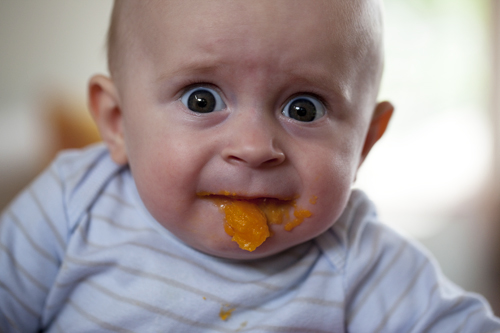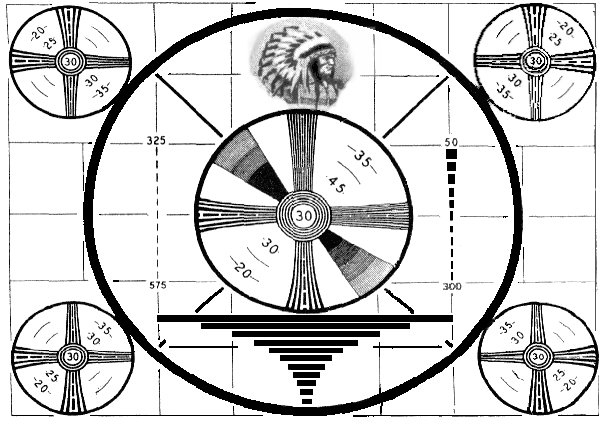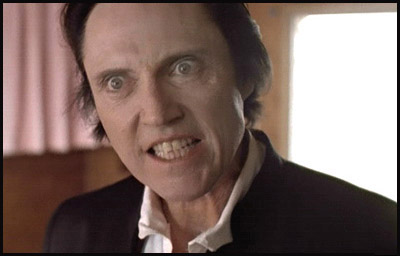I have wanted to write this for some time. However being an accountant during quarter end close is a nightmare, so I am just really looking at the numbers for 2014. Since we are just beginning the playoffs and Dan Kenyon has only completed about a dozen 2015 drafts so far, it may be of some interest as I post-mortem another “respectable” effort. I drafted out of the 15th spot.
I decided and wrote my plan to win on March 20, 2014. I drafted accordingly and I wanted to see how it came out (OK, I did not win so the answer is “poorly”, but at least I can see detriments that are more obvious even than my fashion sense).
“Batting points I am breaking down in three groups because each is separate and distinct from each other. Stolen bases are a class by themselves. An add-on as far as I am concerned and barely related to the other categories. Batting average is another class because batting average doesn’t care if you are a power hitter, a Judy, or one of the many that fall in between. Finally, something I call “Total Points” is the third and of course is made up of homeruns, runs batting in, and runs scored. I add up the three to judge the relative value in this combined category. Some few of the guys who get large amounts of runs scored do not hit many homeruns or drive in many runs either, but that class is small. Within a relatively narrow range, skewed for where the at bats occur in the lineup, if a guy is going to hit so many homeruns, he will have so many RBI’s and runs scored.”
In general, true, except for that last part about the relationship between RBI’s and runs scored, but I repeat this mainly for background.
“For total points, I can concentrate on getting skills in six or seven players. What does the Super Six need to do? I predict that I need 520 Runs, 130 Home Runs, and 485 RBI’s to add to my “average” players cumulative stats. Not as important, but getting 115 Stolen Bases and a good batting average would be nice. The stolen base total is VERY aggressive given I was VERY conservative with the average players in that department.”
So, I put all my eggs in six offensive baskets. And I failed. Not because I did not have choices, but because it turns out I made bad choices. Not all bad, though. The good were three guys that were reliable and productive. Carlos Gomez (1st round and only Trout ranked higher for first round offensive picks by the end of the year), Justin Upton (last pick of the third round and 24th ranked offensive player, so good pick though I wonder why he stopped stealing bases with 8 total, but only two after May), and David Ortiz (nice pick for the first pick of the eighth round, 41st ranked offensive player based on power and RBI, but a BA less than 0.265 after three consecutive years of 0.300+).
These three guys exceeded my expectations in HR and RBI, fell short on Runs with neither Upton nor Ortiz getting 80 runs scored on bad Braves and BoSox teams. BA not the anchor I wanted either. Gomez kept this group honest with 34 SB.
The bad were the other three. Evan Longoria (2nd round) was reliable in his underachieving. Or I guess, after so many “close-to-premium” numbers, I guess I should have expected this. He was healthy, getting 600+ AB for the second straight year, but couldn’t crack 30 HR (which he seems to do every other year, so plan accordingly for 2015) 90 Runs or 100 RBI, which I wanted. BA always seems at risk and the risk came home. Shin-Soo Choo (sacrificing a primo pitcher spot by picking him in the 4th round) I guess was a victim of the phantom “big-contract” curse. With the line-up I was putting together, I expected him, at the top of the Ranger batting order, to score 100 runs, toss in 20 or so SB and help with batting average. He was hurt most of the year and did not give me close to what I needed. Wil Myers (6th round) was the biggest bust of the six. He was hurt and did not improve on 2013 numbers. This was a bad pick and a major screw up by me as this, as Bob Particelli pointed out after the draft, would have been a great spot to do back-to-back pitchers (though I probably would have chosen Homer Bailey).
So, what, in total, did the Super Six (plus their injury replacements which means I used 13 guys at various times for these six positions) get me? Collectively a 0.259 BA with 437 Runs, 133 HR, 482 RBI’s, and 61 SB. That is an A+ on HR and RBI, pretty much right on target. An F on runs scored, 83 less than target. F on batting average. Z on stolen bases, though I knew that was a stretch. I am just going to have to date Judy next year I guess. Not good enough.
“For total points, however, it allows you to separate the sheep from the goats. Assume your bats by position generate on average 60 runs, 15 homeruns, and 60 runs batting in to go with a very conservative 5 stolen bases. One thing is almost certainly going to happen. You will be last in your league in points in those categories. Over the course of the year you would have generated 840 R, 210 HR, 840 RBI and about 70 SB. Honestly, you really have to work pretty hard (or quit) to do worse than that. But there are a lot of players out there that are plus or minus just a few ticks off those marks. They will not be hard to find. The opposite of scarce.”
So for the remaining eight offensive positions on my team, I was looking for 480 Runs and RBI’s to go with 120 HR and 40 SB. I used 26 different ball players for those spots, especially piecing together a MI. Collectively, I ended up with 505 runs, 96 HR, 461 RBI’s, and 54 SB. That is an A+ on runs scored, a C on HR, a B on RBI’s and an A on SB (though the bar was too low). The BA (0.264) was OK in this average challenged age and in fact better than the Subpar Six.
I essentially used the same strategy for my Auction League and ended up having a very good to great offense (10th) and even 10th overall in stolen bases (long my bane). So I think there is method to my madness, though in the Auction I had good luck (coming out parties by Cruz, Frazier and Duda) outweigh the bad (old .193 himself Chris Davis) which allowed me to plug in Fuld, Lagares, and Dyson to pump up the SB numbers. Even so I ran away with HR (lead the league by 43 and finished second overall). The same thing didn’t happen in the Main.
Though it is not fair to say I had no luck. I did not win my $203 bid on Villar (sorry Glenn!) for example. However, separating luck, good or bad, from plan leaves me with two opinions.
The eight field horses strategy is workable as it only really takes a couple of “hits” to make it work. My hits were Morneau and Walker which almost overcame some disappointing players like Jason Castro (I really didn’t expect 0.276 again, but 0.222…C’mon!...he hit like Fidel!) Here I really need to alter just a bit to be heavier in speed. Power took another step back seemingly all over baseball, so I am not going to change anything there for the miss. All in all, I am good here.
I want to change more on Super Six, though in general, I think this works no matter where your draft pick is. Less speed, more meat. Still I think most of my shortfall here was injury related. Myers was just bad.
And to pitching.
“Depending on my draft slot, I will pick up my first starter anywhere from early third to mid-fourth. I am as high on Price, Bumgarner, and Sale. I also had Hamels here, but not so much now with the shoulder. If I end up with Grienke or Shields as my first starter, I am behind but I honestly do not think the drop off is so great that it cannot be overcome. I will have three starters and one closer in the top ten rounds. Depending on how I have managed with my Super Six, I want three closers in total, even one from Colorado or Houston. And my pitchers will be power arms. I know the appeal of guys like Jordan Zimmerman, but in order to get anywhere closer to 1,300 K’s, you need a core of power arms.”
Right on plan, not good execution. And jack up K’s another 7.5%. You needed 1,400 last year to get near the top 20% in points. Used to be you could target 150 K pitchers and not feel behind. You need to average 175 K’s out of seven starter spots just to be in the conversation.
And as far as “…If I end up with Grienke or Shields as my first starter, I am behind…” I wish. Clarabelle Sanchez was my first pitcher and that was a BAD BAD BAD mistake. I wrote when I got back from Vegas “At 5/6 I first pick Anibal Sanchez. I do not think last year was an aberration. Should get me 200+ strikeouts and if he can crack 200 IP, maybe 230.” Ha! Loser!
With injury replacements (I used 7 total pitchers), I ended up with a 3.917 ERA, 11 Whines and 148 K’s out of my “Ace”. Good Whip, but nowhere near the production I needed.
I knew that K’s would be a struggle for me all year and I ended up predictably middle of the pack. But it was not because of my 2, 3 and 4 pitcher slots. I plugged in Weaver (9th round), Lester (10th), and Cueto (12th) and never took them out. Nice recovery, Wayne. Collectively they got me 54 Wins, a 2.740 ERA with a 1.085 WHIP and 631 K’s (that is a 3.5:1 K/BB ratio and even with Weaver, a 93% K/IP ratio). That was almost enough.
For spots 5, 6, and 7, I used a host (if you consider 17 a host) of pitchers. Included in the group was Lincecum (25 starts), whom I left in for the decent K’s. The best of the rest would be Hendricks (9 with good ERA and WHIP, but hurt K’s), Hahn (9) and Carrasco (8 at the end when he was smokin’). Definitely could do better here as collectively these spots got me a 4.146 ERA (when you need a team ERA of 3.300), a 1.338 (need a team 1.200), with 37 Wins (nearly a 40% win rate) and 427 K’s (about a 75% K ratio). I got my wins over all (107 with 102 out of the starters which I think is mainly luck), my WHIP 1.195 (1.193 out of the starters) and a 3.480 ERA (3.452 out of the starters). That was 37.0 league points out of those categories, so considering how late I started on pitching…close. It would be bang on if I had ended up with a few more than 1,206 starter K’s (84% rate). Basically one pitcher short there.
So how bad were my closers? So bad they actually drove my ERA and WHIP UP! Yes, I remember it was strongly recommended I ditch closers early. Perhaps I should have. I picked Glenn Perkins as my first and he was OK. His team was bad, and he had stretches where he was VERY hittable. Big risk in 2015. When I picked Nate Jones (0 IP, 2 ER, 3 BB, 0K, 0 SV) over Fernando Rodney (76 K, 48 SV), who knew exactly how big a screw up that was. I missed out on F-Rod and misplayed the whole FA tango. Well, at least I had Qualls.
In the beginning, I knew K’s and BA would be a challenge. I was right. I thought I had a handle on Saves and SB. I was wrong. Somewhere in the middle is a team that finished fourth against some damn good competition. At one point, late August or early September, I crept into third…for a day. Stephen Fiore and Gregory Glukhovsky had 1st and 2nd locked up since the Roosevelt Administration (Teddy), so I was happy…for a day. Turns out it was just Nick Cassavetes slipping back to the pack to pat me on the head and say “Nice move, Nancy!”, after which he jumped back up and left me with Miss Congeniality. Ah well...close but no cigar.

Anyway, congrats to all the winners! Well played. And since Dan Kenyon has completed two more drafts since you started reading this, you had better start prepping. Pitchers and catchers are reporting…soon…but not soon enough!
Baseball is a slow, boring, complex, cerebral game that doesn't lend itself to histrionics. You 'take in' a baseball game, something odd to say about a football or basketball game, with the clock running and the bodies flying.
Charles Krauthammer



















